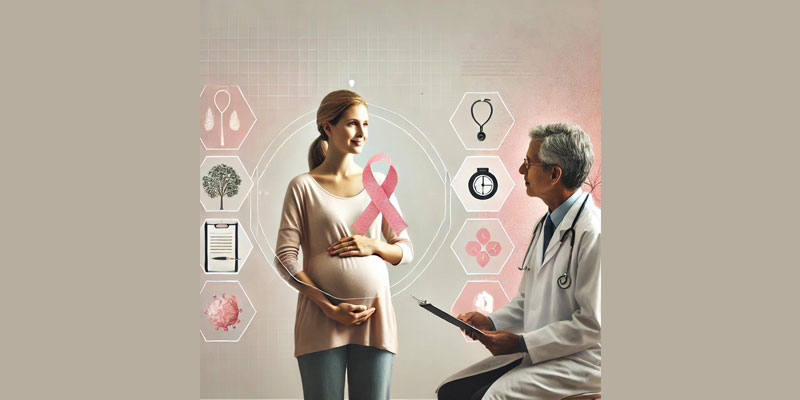Breast Cancer During Pregnancy: Understanding the Risks, Diagnosis, and Treatment Options
Breast cancer is rare during pregnancy, affecting about 1 in 3,000 pregnant women. However, for those who are diagnosed, this dual challenge of cancer and pregnancy requires careful coordination of treatment to ensure both maternal and fetal well-being. Early diagnosis, specialized care, and understanding treatment options can help navigate this complex situation.
Understanding Breast Cancer During Pregnancy
Breast cancer during pregnancy is known as pregnancy-associated breast cancer (PABC). This type of cancer is most often diagnosed in women between ages 32 and 38, which coincides with the age range when many women are having children. The hormonal changes, increased blood flow, and breast tissue changes associated with pregnancy can make it harder to detect lumps, which sometimes delays diagnosis.
Symptoms and Diagnosis
Symptoms of breast cancer during pregnancy are similar to those in non-pregnant women. They include:
- A persistent lump in the breast or armpit area.
- Changes in breast size, shape, or texture.
- Skin changes on the breast, such as dimpling or redness.
The challenge lies in diagnosing breast cancer in pregnant women. During pregnancy, hormonal changes can cause the breasts to be denser, making it harder to detect lumps through a physical exam. Doctors may use safe imaging techniques, such as:
- Ultrasound: Considered safe for the baby, ultrasound is often the first imaging test used to examine a breast lump.
- Mammogram with abdominal shielding: A mammogram can be performed safely during pregnancy with shielding to protect the baby from radiation.
- MRI: In some cases, an MRI without contrast may be used, though this decision depends on the individual’s health situation.
Treatment Options During Pregnancy
Treatment options depend on the stage of cancer, the trimester of pregnancy, and the patient’s health. Typically, treatments that are safe for both the mother and the fetus are prioritized. Here’s an overview of treatment options across the different trimesters:
- Surgery: Surgery, including a mastectomy or lumpectomy, is generally safe during pregnancy and is often the first step in treatment.
- Chemotherapy: In the second and third trimesters, certain types of chemotherapy can be administered safely, as they do not cross the placenta and affect the fetus.
- Radiation Therapy: Radiation is generally avoided during pregnancy, especially in the first trimester, due to risks to fetal development.
- Hormone Therapy and Targeted Therapy: These treatments are usually postponed until after delivery, as they can affect fetal development.
Effects on Pregnancy and Fetal Health
The impact of breast cancer and its treatments on pregnancy depends on the treatment type and timing. For instance, chemotherapy administered in the second or third trimester has not been shown to increase birth defects, although it may slightly increase the risk of preterm labor. Physicians work closely with obstetricians to monitor fetal growth and health throughout the treatment process.
Psychological and Emotional Support
Breast cancer during pregnancy can be emotionally taxing, both for the expectant mother and her family. Emotional support, either through counseling or support groups, can provide a necessary outlet for feelings of stress and uncertainty.
Prognosis and Outlook
While breast cancer during pregnancy is challenging, with early detection and tailored treatment, many women go on to have healthy pregnancies and successful cancer outcomes. It’s crucial for pregnant women to maintain regular health check-ups, discuss any breast changes with their doctor, and consider a team approach for both oncological and obstetrical care.

